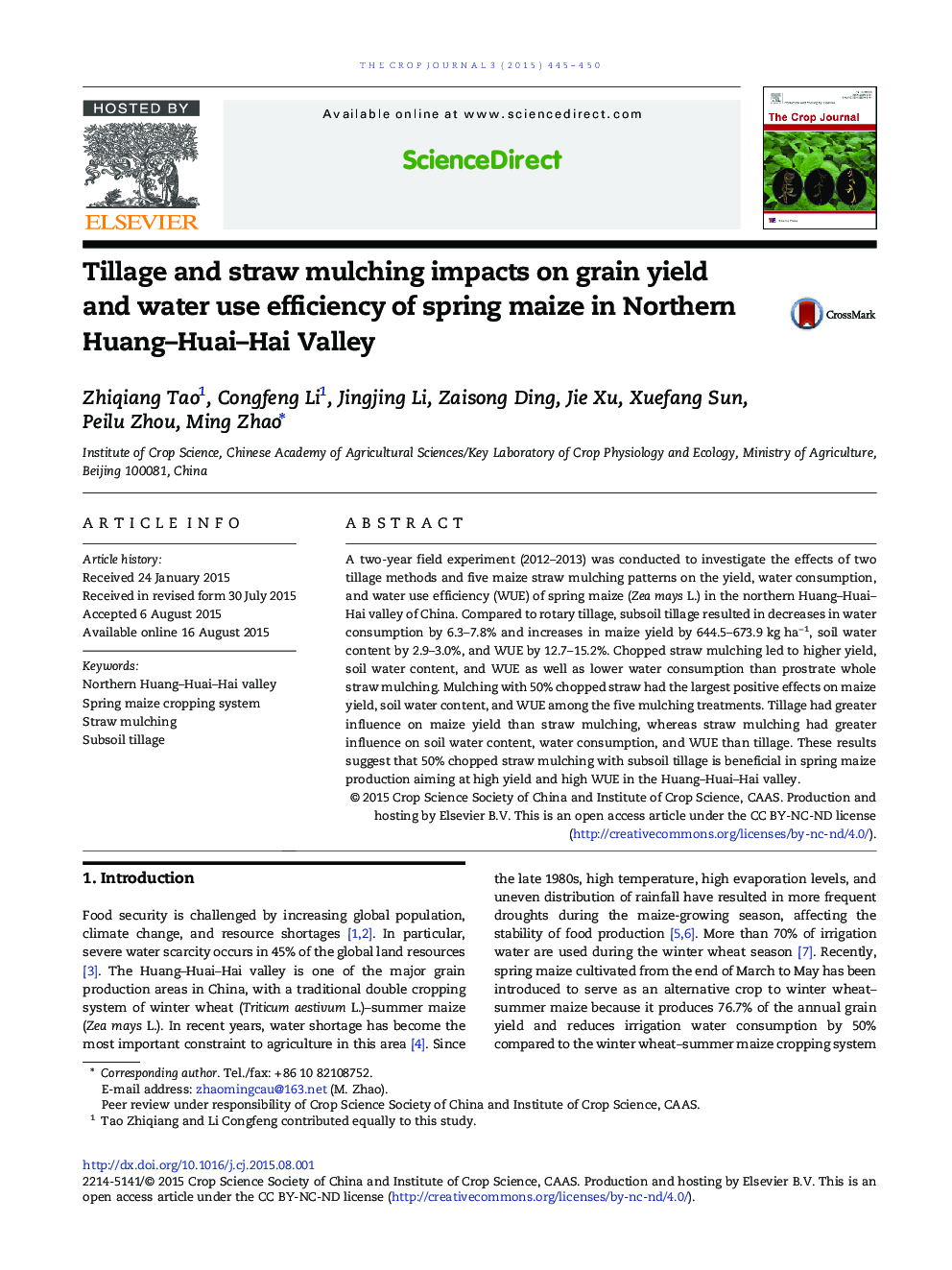| Article ID | Journal | Published Year | Pages | File Type |
|---|---|---|---|---|
| 2079449 | The Crop Journal | 2015 | 6 Pages |
A two-year field experiment (2012–2013) was conducted to investigate the effects of two tillage methods and five maize straw mulching patterns on the yield, water consumption, and water use efficiency (WUE) of spring maize (Zea mays L.) in the northern Huang–Huai–Hai valley of China. Compared to rotary tillage, subsoil tillage resulted in decreases in water consumption by 6.3–7.8% and increases in maize yield by 644.5–673.9 kg ha− 1, soil water content by 2.9–3.0%, and WUE by 12.7–15.2%. Chopped straw mulching led to higher yield, soil water content, and WUE as well as lower water consumption than prostrate whole straw mulching. Mulching with 50% chopped straw had the largest positive effects on maize yield, soil water content, and WUE among the five mulching treatments. Tillage had greater influence on maize yield than straw mulching, whereas straw mulching had greater influence on soil water content, water consumption, and WUE than tillage. These results suggest that 50% chopped straw mulching with subsoil tillage is beneficial in spring maize production aiming at high yield and high WUE in the Huang–Huai–Hai valley.
